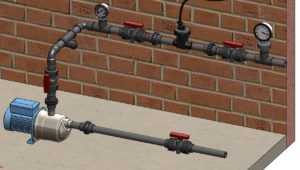Troubleshoot With Pressure Gauges
After almost 50 years in the chlorination industry I still see a number of installations at which some operational problem arises, either at startup or even years down the line, and we get a call to troubleshoot the situation. Upon asking a few questions about the hydraulic conditions under which the ejector is operating we find out that there are no pressure gauges mounted anywhere near the ejector.
When we ask about the water pressure at the ejector inlet we may be given a number but when we ask the location of the pressure reading we are told, “well, that’s over by the water main” or “that’s the system pressure” or it’s at the booster pump”. When we further ask “where is that located with respect to the location of the ejector”, we find out that it is perhaps 500 feet away, or it’s in another building or somewhere they really don’t know where.
The same applies for the backpressure when asking what is the pressure at the ejector outlet. Again, we ask for the location of the pressure reading. Sometimes it is the main system pressure and the ejector outlet is discharging into 100 feet of 1″ pipe with 6 elbows and a ball valve, then running up 25 feet.
Know Your Inlet Pressure & Backpressure
So, we often face a situation where we don’t have accurate hydraulic information. All for the lack of a $15.00 inlet pressure gauge mounted within a few feet of the ejector inlet, and a backpressure gauge, normally a water pressure gauge with a chemical protector that costs perhaps $100.00. Think of the costs in downtime, personnel time, maybe a service call, as well as the frustration of an unsolved problem. Those pressure gauges are worth their weight in Gold when you need to know what’s going on and there is no vacuum or the chlorine feed rate is falling off. When we know those pressures it becomes so much easier to diagnose the problem and get the system back up and running.
Howard Specker, Chemical Injection Technologies, Inc.
